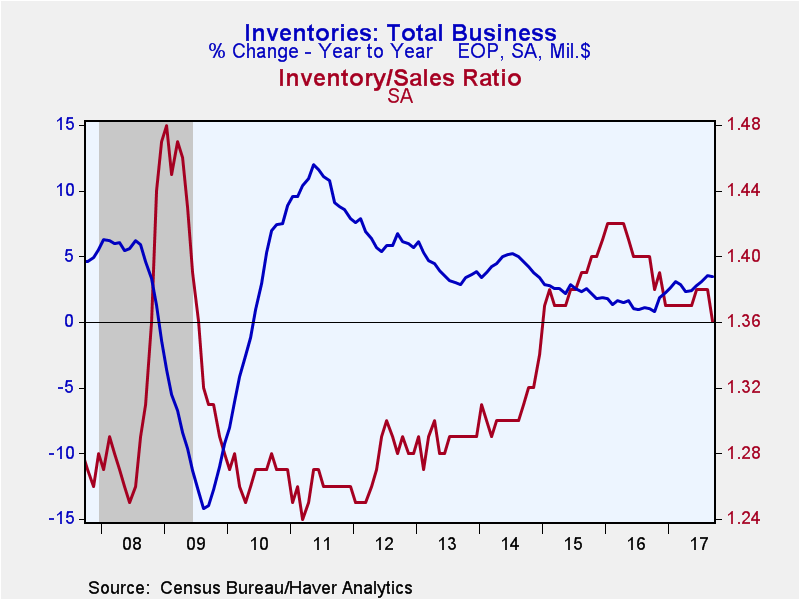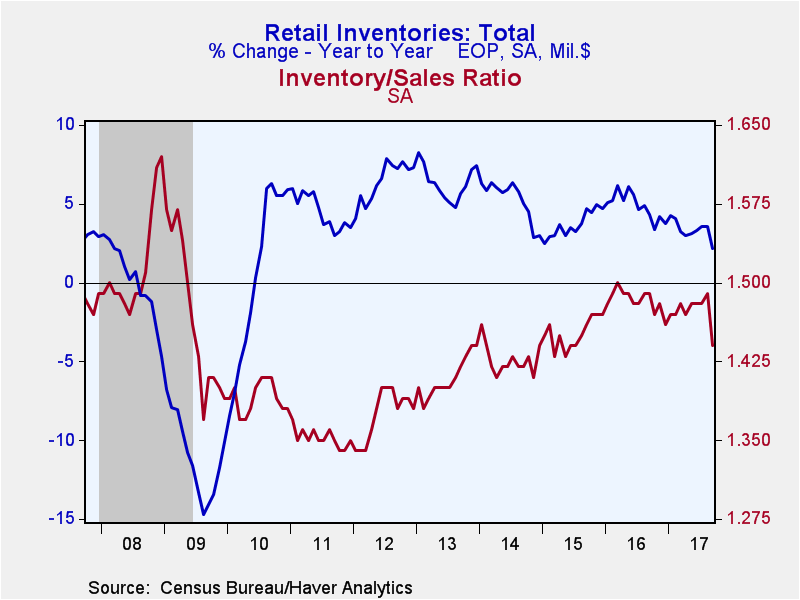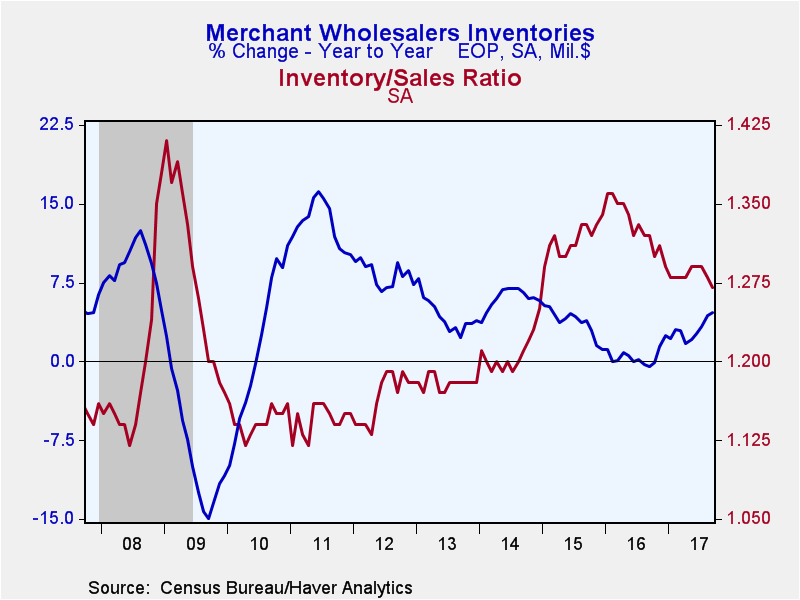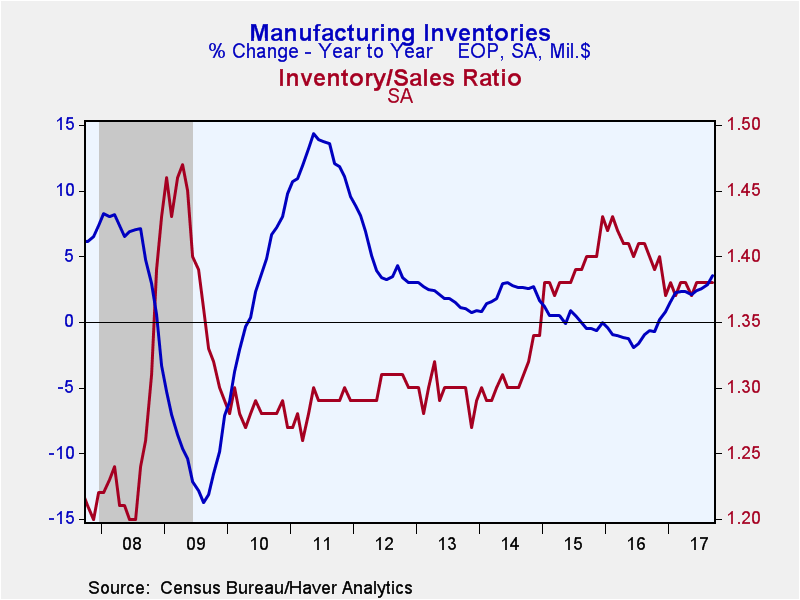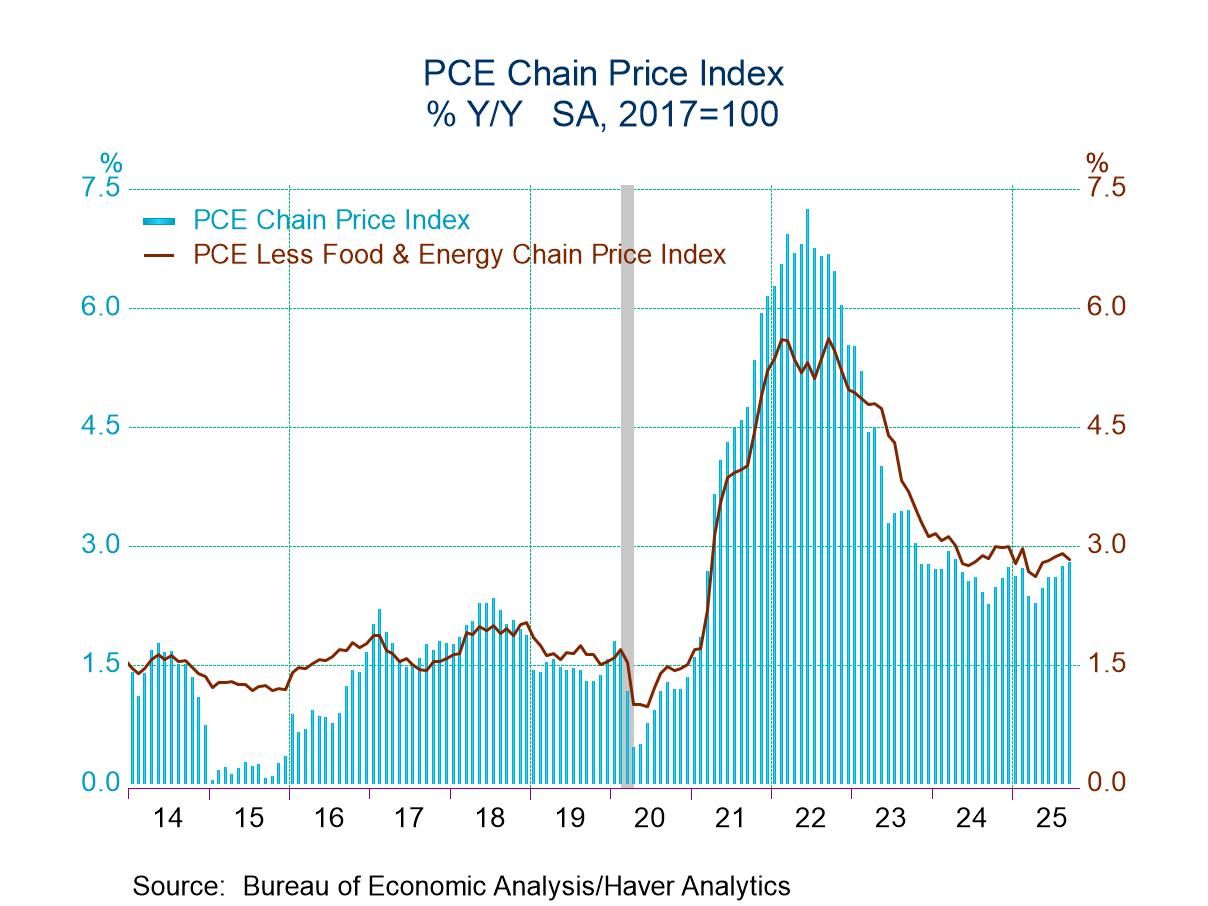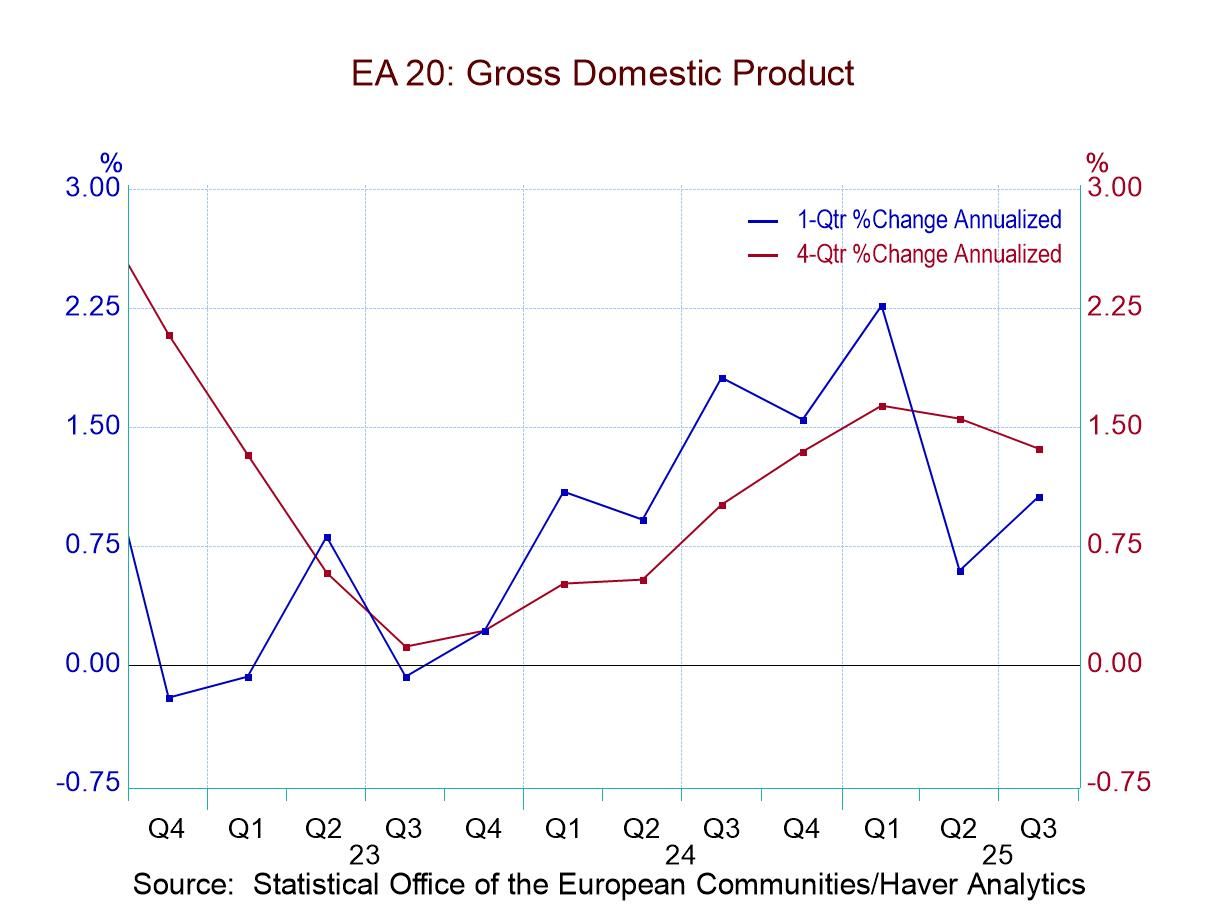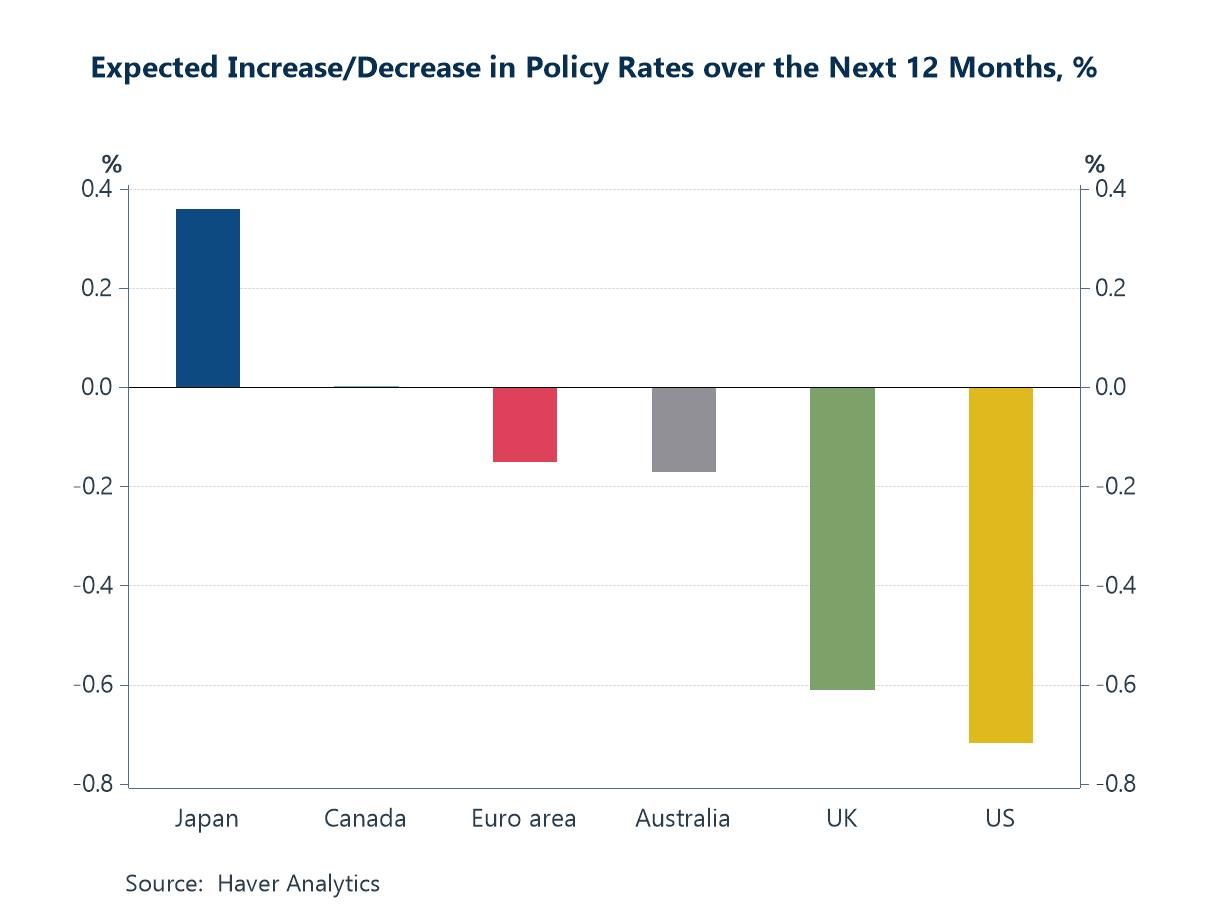 Global| Nov 15 2017
Global| Nov 15 2017U.S. Business Inventories Remain Unchanged; Sales Jump
by:Tom Moeller
|in:Economy in Brief
Summary
Total business inventories held steady (3.5% y/y) in September following a little-revised 0.6% August rise. Retail inventories declined 0.9% (+2.2% y/y) led by a 2.4% fall (+4.0% y/y) in motor vehicle inventories. Outside of the auto [...]
Total business inventories held steady (3.5% y/y) in September following a little-revised 0.6% August rise. Retail inventories declined 0.9% (+2.2% y/y) led by a 2.4% fall (+4.0% y/y) in motor vehicle inventories. Outside of the auto sector, retail inventories eased 0.1% (+1.2% y/y). Furniture & home appliance inventories rose 0.6% (1.9% y/y), but apparel inventories fell 0.3% (-1.3% y/y). General merchandise inventories were little changed (-1.9% y/y) for a second month. Merchant wholesale inventories increased 0.3% (4.6% y/y) while inventories in the factory sector rose 0.7% (3.6% y/y), the strongest of four monthly increases.
Total business sector sales jumped 1.4% (6.4% y/y) following a 0.8% August increase. Retail sales surged 2.1% (5.2% y/y) paced by an auto sales promotion. Vehicle sales jumped 4.6% (5.4% y/y). Nonauto sales strengthened 1.4% (5.2% y/y) after two months of moderate increase. Building materials sales surged 3.0% (11.4% y/y) while general merchandise store sales rose 0.3% (4.2% y/y). Furniture store sales rose 0.2% (1.3% y/y) and apparel store sale notched 0.1% higher (0.8% y/y). Wholesale trade sales surged 1.3% (8.5% y/y) and factory sector shipments improved 0.8 (5.3% y/y).
The inventory-to-sales ratio in the business sector eased to 1.36 from 1.38. It was the lowest ratio in nearly three years. The retail sector I/S ratio fell sharply to 1.44, pulled lower by the auto sector's sharp decline to the lowest level in nine months. The nonauto retail sector's I/S ratio also fell sharply and continued its decline from the early-2016 peak. A lower ratio in the general merchandise category has paced the decline, while apparel's ratio also has fallen precipitously. Working the other way, the furniture & home furnishing ratio rose to the highest level since February. The wholesales sector I/S ratio declined to the lowest level in nearly three years and the ratio in the factory sector held steady, depressed versus the 2016 high.
The manufacturing and trade data are in Haver's USECON database.
| Manufacturing & Trade | Sep | Aug | Jul | Sep Y/Y | 2016 | 2015 | 2014 |
|---|---|---|---|---|---|---|---|
| Business Inventories (% chg) | 0.0 | 0.6 | 0.3 | 3.5 | 2.3 | 1.8 | 3.4 |
| Retail | -0.9 | 0.6 | 0.0 | 2.2 | 3.8 | 4.7 | 3.0 |
| Retail excl. Motor Vehicles | -0.1 | 0.3 | -0.1 | 1.2 | 1.8 | 3.8 | 2.6 |
| Merchant Wholesalers | 0.3 | 0.8 | 0.6 | 4.6 | 2.5 | 1.2 | 5.8 |
| Manufacturing | 0.7 | 0.6 | 0.4 | 3.6 | 0.8 | -0.1 | 1.6 |
| Business Sales (% chg) | |||||||
| Total | 1.4 | 0.8 | 0.3 | 6.4 | -0.1 | -3.2 | 2.8 |
| Retail | 2.1 | -0.1 | 0.5 | 5.2 | 2.7 | 1.9 | 4.0 |
| Retail excl. Motor Vehicles | 1.4 | 0.5 | 0.6 | 5.2 | 2.3 | 0.4 | 3.3 |
| Merchant Wholesalers | 1.3 | 1.9 | 0.0 | 8.5 | -0.5 | -4.9 | 3.6 |
| Manufacturing | 0.8 | 0.6 | 0.2 | 5.3 | -2.0 | -5.8 | 1.3 |
| I/S Ratio | |||||||
| Total | 1.36 | 1.38 | 1.38 | 1.40 | 1.40 | 1.38 | 1.31 |
| Retail | 1.44 | 1.49 | 1.48 | 1.49 | 1.48 | 1.45 | 1.43 |
| Retail excl. Motor Vehicles | 1.22 | 1.24 | 1.24 | 1.27 | 1.27 | 1.26 | 1.23 |
| Merchant Wholesalers | 1.27 | 1.28 | 1.29 | 1.32 | 1.33 | 1.32 | 1.21 |
| Manufacturing | 1.38 | 1.38 | 1.38 | 1.40 | 1.41 | 1.39 | 1.31 |
Tom Moeller
AuthorMore in Author Profile »Prior to joining Haver Analytics in 2000, Mr. Moeller worked as the Economist at Chancellor Capital Management from 1985 to 1999. There, he developed comprehensive economic forecasts and interpreted economic data for equity and fixed income portfolio managers. Also at Chancellor, Mr. Moeller worked as an equity analyst and was responsible for researching and rating companies in the economically sensitive automobile and housing industries for investment in Chancellor’s equity portfolio. Prior to joining Chancellor, Mr. Moeller was an Economist at Citibank from 1979 to 1984. He also analyzed pricing behavior in the metals industry for the Council on Wage and Price Stability in Washington, D.C. In 1999, Mr. Moeller received the award for most accurate forecast from the Forecasters' Club of New York. From 1990 to 1992 he was President of the New York Association for Business Economists. Mr. Moeller earned an M.B.A. in Finance from Fordham University, where he graduated in 1987. He holds a Bachelor of Arts in Economics from George Washington University.


